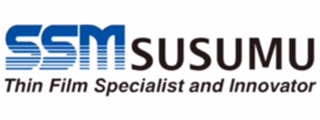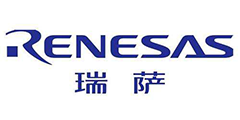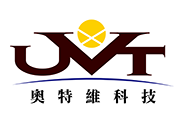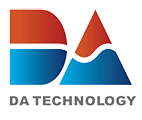- Ameya360 Component Supply Platform >
- Trade news >
- Startup Claims AI Design Wins
Startup Claims AI Design Wins
Startup Gyrfalcon is moving fast with a chip for inferencing on deep neural networks, but it faces an increasingly crowded market in AI silicon. A year after it got its first funding, the company is showing a working chip and claiming design wins in smartphones, security cameras, and industrial automation equipment.
Data centers typically train deep neural networks and run inference tasks on them using banks of servers. Increasingly, client and embedded systems from cars to handsets are adopting accelerators to speed the inferencing jobs.
Apple, Google, and Huawei are already shipping smartphones with inferencing blocks in their custom SoCs. Google and Microsoft built inference accelerators for their data centers.
Among merchant suppliers, Movidius, now part of Intel, is shipping inference chips while Cadence, Ceva, and Synopsis are supplying IP blocks and Imagination and ARM have announced plans. At least a dozen other startups are still in stealth mode with AI siliconincluding Groq, founded by a group of former Google chip developers to build an inference chip.
“Most of the action in inference is from the IP suppliers; largely, this will be a market for integrated chips,” said Linley Gwennap, principal of market watcher The Linley Group.
For its part, Gyrfalcon has been showing since late last fall working silicon for its Lightspeeur SPR2801 processor for convolutional neural nets (CNNs). The 28-nm TSMC chip fits in a 7 x 7-mm package and packs tens of thousands of proprietary cores and embedded SRAM to crank out 9.3 TOPS/watt without external DRAM. The cores are mainly ALUs with associated memory and logic for controlling dataflows.
The chip uses ideas that one of its co-founders, chief scientist Lin Yang, articulated in a 1988 Ph.D. paper about CNNs while he was at UC Berkeley. The chip only accelerates CNNs, one of the most popular of a wide variety of neural nets in use.
A top-five smartphone maker will use the chip in a future flagship phone, said Frank Lin, co-founder and president of the startup. In China, a large insurance company will design it into surveillance cameras and a steelmaker in Shanghai will use it in inspection systems.
“We moved very fast from getting our first funding in February last year to having an FPGA verified in April and a chip back from TSMC in mid-September,” said Lin.
Gyrfalcon announced in December that its chip will be used next to a parallel processor from Socionext of Japan in a platform for video analysis. The joint product should be available in March, with Bilkon Ltd., a surveillance systems maker in Turkey, as its first customer.
QuickLogic is evaluating the Gyrfalcon chip for possible use along with a future generation of its sensor hub for detecting wake words in a variety of “hearable” products. Of a dozen companies building inference chips and a handful that QuickLogic has evaluated, “they are targeting our market more closely than others we’ve seen,” said Timothy Saxe, QuickLogic’s CTO.
AI agents such as Amazon’s “Alexa will drive people to want more natural-language processing over broader vocabularies, so we need to partner with someone who can accelerate that,” said Saxe.
Gyrfalcon has ambitious plans to field a second product by June, with increased performance and a whole new family of chips by the end of the year. It also is exploring the possibility of custom versions consuming as little as 50 milliwatts for high-volume customers.
The startup designed a PCI Express card for using its chip in servers. It will follow in the footsteps of Movidius, releasing by April a $69 USB dongle with its chip, aimed to attract a broader set of CNN software developers.
“We don’t want only Ph.D.s to do this work — the dongle has several neural network models preloaded and it’s very easy to use,” said Lin, who helped China Mobile launch its international business before joining the startup.
Lin would not say how much money the startup has raised from investors in China, Korea, Japan, and the U.S. in two rounds so far. “For 2018, the money we raised can support us, and with our design-ins and potential orders, we’ll have revenue this year and even hope to break even,” he said.
So far, the company has 41 employees, most of them based in Silicon Valley.
Previous:JDI's Finger Sensor: Too Little Too Late?
Next: UMC Slashes Capex
Online messageinquiry

Tech Giants Launch AI Arms Race, Aiming to Spark a Wave of Smartphone and Computer Upgrades

AI Market Ramps Everywhere

AI Still Has Trust Issues
- Week of hot material
- Material in short supply seckilling
| model | brand | Quote |
|---|---|---|
| CDZVT2R20B | ROHM Semiconductor | |
| BD71847AMWV-E2 | ROHM Semiconductor | |
| MC33074DR2G | onsemi | |
| RB751G-40T2R | ROHM Semiconductor | |
| TL431ACLPR | Texas Instruments |
| model | brand | To snap up |
|---|---|---|
| TPS63050YFFR | Texas Instruments | |
| BU33JA2MNVX-CTL | ROHM Semiconductor | |
| IPZ40N04S5L4R8ATMA1 | Infineon Technologies | |
| STM32F429IGT6 | STMicroelectronics | |
| ESR03EZPJ151 | ROHM Semiconductor | |
| BP3621 | ROHM Semiconductor |
- Week of ranking
- Month ranking
Qr code of ameya360 official account
Identify TWO-DIMENSIONAL code, you can pay attention to


Please enter the verification code in the image below:























